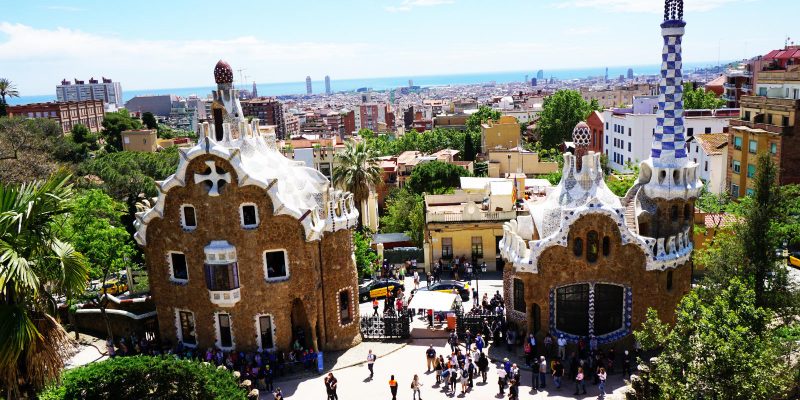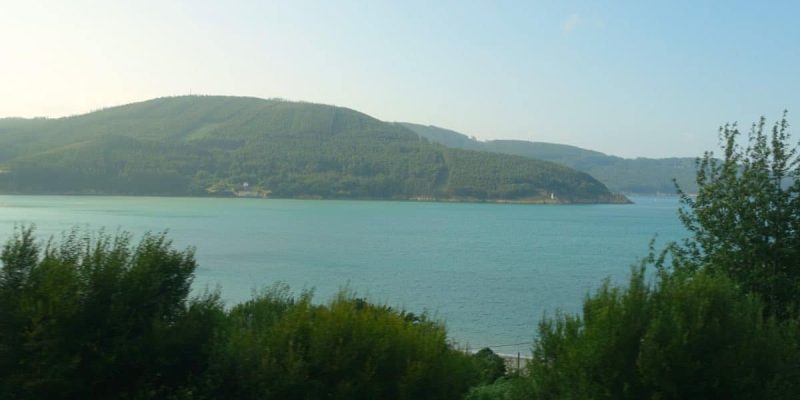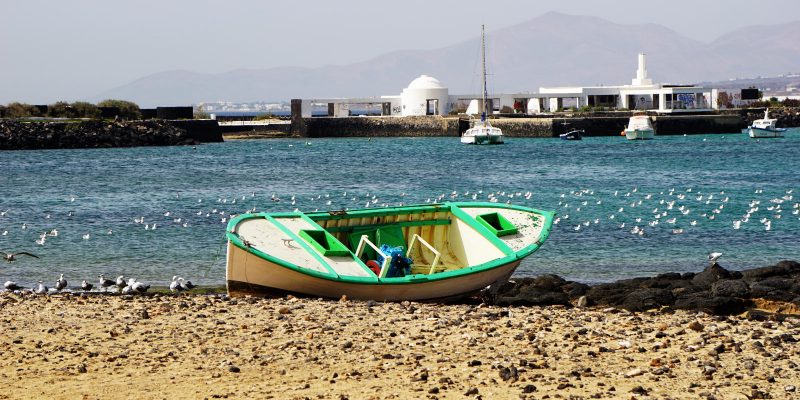Destinations in Spain offer something for every type of vacation. Whether you are interested in city breaks, mountain hikes or beach vacations, Spain offers a wide range of options.
Spain’s cultural diversity is impressive. Regions such as Catalonia and Andalusia are rich in art and history, with Arabic influences. These are also reflected in the architecture and cuisine. The landscapes on the Iberian Peninsula range from breathtaking beaches and coastal regions to majestic mountain peaks.
Spain is also a country with a rich cultural diversity. This is reflected in the numerous architectural masterpieces and historic cities. Sights such as the Alhambra in Granada, the Sagrada Familia in Barcelona and the Guggenheim Museum in Bilbao are just some of the most famous and popular destinations in Spain.

For those looking for nature and relaxation, the Canary Islands and the Balearics, for example, are an excellent destination with their unique volcanic landscapes and crystal-clear waters. The Canary Islands are also a popular winter destination. Temperatures here are pleasantly warm almost all year round.
Spanish cuisine is world-famous and offers a variety of regional specialties such as tapas and paella that will tantalize your taste buds. Particularly noteworthy are the regional delicacies that make the destinations in Spain unmistakable.
The country is known for its lively nightlife and festivals, which attract visitors from all over the world. Spain is also a sun-drenched country, offering sunshine over 300 days a year, making it an ideal destination for sun worshippers.
The cost of living in Spain is low compared to many other Western European countries, making a vacation there relatively affordable. For those who value privacy and comfort, renting a vacation home in Spain offers a complete solution with the comforts of home and the ability to organize your time as you wish. Spain is also a family-friendly destination, suitable for the whole family and even pets.
Explore the destinations of Spain
Here you will find our tips for a great time in Spain

Andalusia is the southernmost region of Spain. Here, the sun shines almost all year round and reveals a world full of colour, passion and unforgettable experiences that await holidaymakers.

Asturias, an enchanting region in northern Spain that delights visitors from all over the world with breathtaking nature, cultural richness and warm hospitality. Asturias, also known as "Green Spain", offers unique landscapes, delicious gastronomy and a rich history to discover.

Hardly any other city in Europe is as high on the "travel wish list" as Barcelona. Rightly, we think, one should visit the capital of Catalonia and if it is feasible, stay a little longer.

The Basque Country, or Euskadi as it is known in the local Basque language, is a unique and proud part of Spain. Here tourists can experience a unique blend of rich history, breathtaking nature and impressive art and culture.

Cantabria, what a fascinating region in the north of Spain that attracts travelers from all over the world with its impressive nature, rich history and authentic charm. The region is nestled between the Cantabrian Mountains and the Bay of Biscay.

The oldest Canary Island is Fuerteventura. The island is located about 100 kilometers off the African mainland in the Atlantic Ocean and is not only very popular with windsurfers and kite surfers.

Galicia - a hidden gem in northwestern Spain, where the rugged beauty of the Atlantic meets the lush, green hills. This unique destination offers a perfect blend of vibrant culture, breathtaking nature, captivating history and exquisite cuisine.

The island of Lanzarote lies around 140 kilometres off the Moroccan coast in the Atlantic Ocean. Known for its unique volcanic landscape, beautiful beaches and mild climate all year round, Lanzarote offers the perfect combination of nature, culture and relaxation.

Madrid is a city that seemingly never sleeps and welcomes everyone with open arms. Whether you are looking for culture, history, gastronomy or just a good time, Madrid has something for everyone.

Majorca, the largest island in the Balearic Islands, offers a wide range of vacation experiences that make it one of the most popular destinations in the Mediterranean. With its pleasant climate, picturesque landscapes and rich culture, Majorca is an ideal place for travelers seeking relaxation, adventure and cultural discovery.

Discover Tenerife, one of the Canary Islands, where the sun shines all year round and adventure awaits around every corner. Tenerife is not just a holiday destination, it is the place that fascinates with its natural beauty, rich culture and unforgettable experiences.
Travel information for Spain
How to get there
By plane
Besides the largest Spanish airline Iberia, there are also smaller scheduled airlines and low-cost airlines. Madrid and Barcelona are the hubs of air traffic in Spain.
From Germany, numerous airlines fly to the most diverse destinations in Spain.
By train
Spain has a well-developed high-speed rail network. Connections from Germany are mainly through two level crossings between France and Spain, one to the west and one to the east of the Pyrenees.
Reservations are compulsory on long-distance trains.
By bus
From Germany, intercity buses run from some major cities to Spain.
By car
By car, it takes a while to get to Spain, especially from Germany. When driving in Spain, you should be aware that most Spanish motorways are subject to tolls. The driven distance is paid with a ticket system. Roughly calculated 100 km cost about 10,-€. Some urban motorways may be toll free.
Entry requirements
General entry requirements
- German citizens and all EU citizens do not require a visa for Spain for a stay of up to 90 days within a six-month period
- Valid travel documents such as an identity card or passport must be presented upon entry
- Minors traveling without their legal representatives require a power of attorney from their legal guardian(s)
Visa for non-EU citizens
- Non-EU citizens who require a visa must apply for their visa in person at the embassy or the representation responsible for them
- Different visas are required for longer stays or special purposes such as work or study
On the way in Spain
Within Spain it is advisable to travel by bus, train or car.
By bus
The long-distance bus network in Spain is well developed and functions better than rail transport. There are different line operators for individual routes.
By rail
RENFE, the national railway of Spain, has several high-speed lines in the country. If you look at the railway network, you will notice that most of the connections go to and from Madrid.
Due to cost-cutting measures, the state railway’s timetable has suffered greatly. Many connections have been cancelled and the timetable thinned out.
In northern Spain, a narrow-gauge railway (FEVE) operates, in the Basque Country the EuskoTren operates and in Catalonia the FGC operates.
By car
In Spain:
- Motorway (motorway marked AP xx): max 120 km/h, toll, few entries and exits, good quality, forbidden for slow traffic
- Autovias (motorway marked A xx): max 120 km/h, quality often worse than Autopista, slow traffic allowed
- National roads (marked N xxx): single lane 90 km/h, otherwise 100 km/h
- Country roads: 90 km/h
- in town: 50 km/h,
- private towing prohibited
- Turn left: the tracks are often on the right side and cross the road at right angles
- blood alcohol limit 0,5
- Telephoning at the wheel can be very expensive with up to 600€
Best time to visit
The months of May to October are generally considered the best time to travel to Spain, with a particular focus on the months of June, July and August for beach vacations and water sports on the Mediterranean coast. For those who prefer milder temperatures, the spring months of April and May and the fall months of September to November are ideal.
Regional differences
Northern Spain
Northern Spain, including Galicia, the Basque Country and the Atlantic coast, is particularly recommended in spring and early summer, when the countryside is in bloom and temperatures are mild.
Mediterranean coast
The Mediterranean coast offers a pleasant climate all year round, with the summer months being particularly suitable for beach visits.
Southern Spain
Southern Spain, including Andalusia, is recommended in spring and fall, as summers can get very hot.
Central Spain
Central Spain, characterized by hot summers and cold winters, is best visited in spring and autumn.
Canary Islands
The Canary Islands are a year-round destination due to their mild climate, especially popular over Christmas, New Year’s Eve and during the Easter vacations.
Balearic Islands
The Balearic Islands offer a typical Mediterranean climate and are a particularly attractive destination in the summer months.
Special climatic features
The water temperatures in May, June and July are between 15 and 22 °C, which can be relevant for water sports activities.
In the months of May to July, the sun shines on average between 6 and 12 hours a day, which is attractive for sun worshippers.
Language
Castilian, Galician, Catalan and Basque are spoken in Spain. Spanish (Castilian) is an official language.
In the large tourist centres, you can communicate very well in German and English. In rural areas it is recommended to speak some Spanish.
Currency
In Spain you pay with the euro.
Tip
In Spain’s restaurants, people do not expect to leave more than 5% tip on the table.
No tip is expected for taxi rides. However, the driver will certainly be happy about it.
At the hotel the rule of thumb is to tip around €1 per night or order to the room.
Plug
In Spain plugs of type C, F and L are used. For the types C and F, deute holidaymakers do not need an adapter. Occasionally there are still sockets of type L for which an adapter is needed.